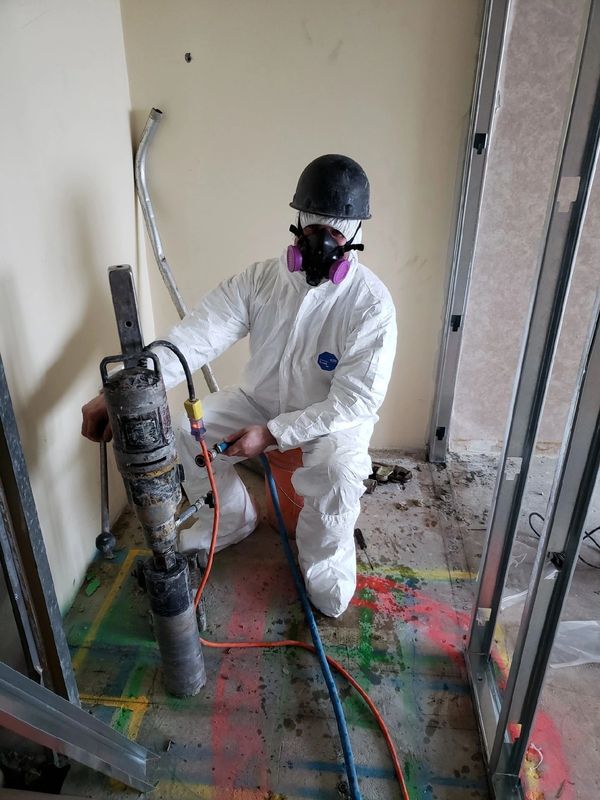Concrete Scanning: An Important Step Towards Guaranteeing Architectural Honesty and Safety
In the world of building and construction and infrastructure maintenance, the relevance of concrete scanning can not be overstated. By utilizing sophisticated modern technology and methods, concrete scanning serves as a crucial tool in guaranteeing that the honesty and safety of bridges and buildings are supported to the highest possible requirements.
Importance of Concrete Scanning
Concrete scanning plays a critical duty in guaranteeing the structural honesty and safety of buildings and facilities tasks. By making use of sophisticated modern technologies such as ground-penetrating radar (GPR) and electromagnetic induction, professionals can non-destructively examine concrete frameworks to identify possible issues, gaps, embedded things, and reinforcement design. This process allows early discovery of anomalies that could endanger the security of a framework, avoiding costly damages and making sure the safety and security of residents.
Before boring, reducing, or coring right into concrete, scanning aids identify the precise areas of rebar, post-tension cords, and various other embedded aspects, reducing the danger of accidental hits that can lead to structural weaknesses. In addition, concrete scanning aids in quality control by verifying the thickness of concrete covers and discovering any disparities that may affect the total durability of the structure.
Innovation for Concrete Examination

Advantages of Very Early Detection
Timely discovery of architectural concerns can dramatically minimize threats and guarantee the longevity of construction tasks. By recognizing possible troubles beforehand in the building and construction process, stakeholders can take positive procedures to resolve problems before they escalate right into larger and much more expensive problems. Among the key benefits of very early discovery is the avoidance of architectural failings, which can position severe safety and security threats and bring about project hold-ups and financial losses.
Additionally, early detection enables timely repair work and maintenance, which can assist expand the lifespan of the structure. By attending to issues without delay, building and construction teams can avoid pricey fixings and even the requirement for premature substitute of structural elements. This positive approach not only conserves time and cash yet also enhances the total security and sturdiness of the building project.
Additionally, very early detection can boost task preparation and decision-making by offering stakeholders with beneficial insights into the problem of the structure. Equipped with this information, task managers can make educated options concerning building and construction materials, timelines, and techniques, bring about extra effective and reliable project results.
Ensuring Structural Stability
Guaranteeing the structural security of a building task is vital to its safety and durability. Architectural security describes the ability of a structure or framework to keep its form and feature under various tons and ecological problems. To achieve this, complete evaluation and surveillance of the structure are necessary. Concrete scanning plays a critical duty in guaranteeing architectural security by discovering prospective problems such as gaps, delamination, or reinforcement deterioration that can compromise the integrity of the structure with time.
By utilizing advanced scanning innovations like ground-penetrating radar (GPR) and electro-magnetic induction, building and construction experts can non-invasively inspect concrete frameworks to identify locations of problem below the surface area. This proactive approach enables for the early discovery of weaknesses or defects, making it possible for timely fixings or reinforcement to stop structural failures.
Regular concrete scanning throughout various building phases and throughout the life cycle of a structure can help keep its stability, mitigate threats, and make sure the security of owners. By prioritizing structural stability through concrete scanning, construction projects can enhance their strength and sturdiness, eventually contributing to higher security and long life.

Stopping Essential Failures
Carrying out routine assessments, such as concrete scanning, can reveal hidden issues like spaces, cracks, or rust that might compromise the integrity of a structure. By using sophisticated scanning modern technologies like Ground Permeating Radar (GPR) or Concrete X-ray, engineers can non-destructively analyze the problem of concrete and recognize weak factors that require support or repair work.

Conclusion
Finally, concrete scanning plays an essential function in making certain architectural honesty and safety by using innovative technology for early discovery of possible concerns. This positive method helps avoid critical failures and makes click resources certain the stability of frameworks. It is necessary to prioritize concrete evaluation as a common method to safeguard the longevity and safety of structures and facilities.
Concrete scanning plays an important role in making certain the architectural integrity and safety and security of structures and facilities projects. Additionally, concrete scanning aids in quality control by validating the density of concrete covers and spotting any kind of discrepancies that may influence the overall toughness of the structure. Concrete scanning plays a vital role in making certain architectural stability by discovering potential problems such as voids, delamination, or reinforcement deterioration that might jeopardize the stability of the framework over time.

In conclusion, concrete scanning plays an essential duty in guaranteeing structural stability and safety and security by utilizing sophisticated innovation for early detection of potential problems.